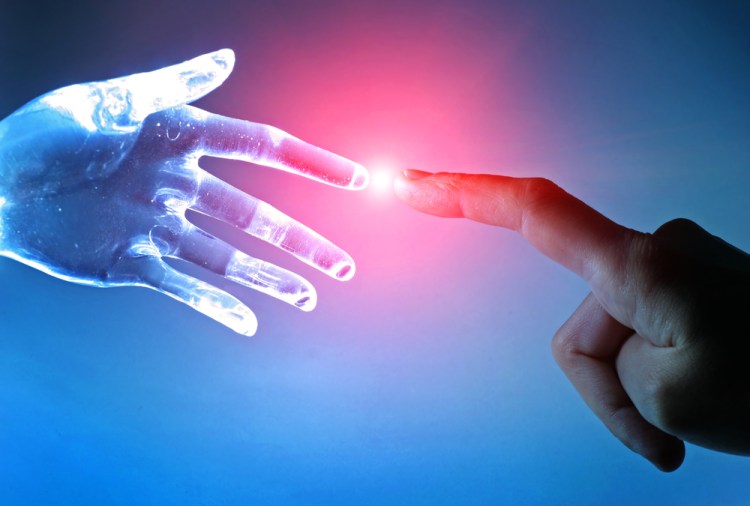Steam rolled out of the pot, and my kitchen was filled with an intoxicating blend of scents.
I’d cooked a turkey ragu before, but as soon as I opened the pot, I knew this would be an entirely different experience.
There were the familiar, comforting notes of ground turkey and mushrooms, but there was also earthiness from the beets, the fire of serrano chile, and an unexpected brightness from the coriander seed (coriander seed!). My dinner wouldn’t have been out of place at one of San Francisco’s trendy food trucks or upscale restaurants, but coming out of my $15 IKEA pot, it was unbelievable. As I mixed in the pasta and ricotta cheese and took the first incredible bite, I realized that A.I. could do a lot more for me than just beating me at Go.
It turns out that my fantastic turkey and beet ragu isn’t an old family recipe — instead, it was a collaboration between IBM’s Chef Watson service and me. The A.I. and I worked together to transform a pleasant (but honestly, a bit bland) recipe from The New York Times into something that was both unusual and delicious. The base was still the same – noodles, ground turkey, a bit of wine, and ricotta cheese. But the spices and vegetables were insane-sounding things I’d never have thought to combine, suggested to me from Chef Watson’s analysis of its database of over 10,000 recipes and my ingredient list.
It was a moment that made me feel like I was living in the future, and the future was amazing. But many of the conversations I’ve had about A.I. in Silicon Valley have had somewhat dark undertones. They end up reaching one of two destinations: the robots are coming for our jobs, or how do we get rich making the robots that are coming for other people’s jobs?
We are right to have concerns about what an A.I.-powered world will look like. But in treating it as a given that the role of A.I. is to replace humans altogether, I think we sell ourselves and our creativity short. For every minute we spend designing and planning for the A.I.s that can replace humans, we should spend a minute designing and planning for how A.I. and humans, working together, can do things that have never been done before.
The challenge is in figuring out how to pair human creativity and judgment with insight and inspiration from machine learning.
Chef Watson is trained on 70 million recipes, using neural networks to identify flavors that go well together, regardless of whether or not they would conventionally be paired. But the results from Chef Watson alone are often ghastly. The original recipe Chef Watson gave me had 13 cups of beets and a 1/4 cup of coriander (over half the jar — it would have liquefied my tongue).
But the triumph of Chef Watson’s interface is that it lets the human driver continue to adjust and tweak the recipe, asking for suggestions and replacements on individual ingredients and adapting accordingly. When driven by even an average cook, the results can be downright stunning, showcasing how powerful a collaboration between A.I. and human creativity can be.
Of course, the potential for A.I. and humans working together goes far beyond cooking. Our latest update to Boomerang, called Respondable, is an intelligent assistant that tells you if an email you send will get a response — before you even send it. Trained on over ten million emails, it offers predictions and suggestions for how to make messages you send more effective, in real time, as you write them. But like with Chef Watson, it’s up to the user to adjust the email content to incorporate its suggestions, and making the final decisions about what gets sent is the responsibility of the human.
And even in chess, the original triumph of A.I. over humans, it turns out there’s still a role for human players. Almost two decades after Deep Blue defeated Garry Kasparov, the best chess being played today isn’t powered by machines alone. Instead, “freestyle” or “centaur” chess teams, in which humans and A.I.s work together, are largely considered the best “players” in the world. Once again, the humans make the final decisions about which moves to make, but they’re able to tap into the analysis and recommendations of A.I.s with perfect memories and huge datasets to inform those decisions.
None of us has time to read, memorize, and process 10,000 recipes, track down and study 30 years’ worth of chess games, or analyze tens of millions of emails to find out what parameters matter. A.I. does! But no A.I. has true creativity, a lifetime of experiences outside the specific domains of its training data, or, for that matter, our understanding of our own taste in food.
When you combine our creativity and judgment with the inspiration and pattern matching capability of machine learning trained on millions or even billions of data points, you can get something truly magical. The future of humans and A.I. isn’t an impersonal dystopia where machines have taken all of our jobs. It’s a world filled with great food, great communication, and great chess, where humans and A.I. work together to do things neither can do alone.
VentureBeat's mission is to be a digital town square for technical decision-makers to gain knowledge about transformative enterprise technology and transact. Learn More

